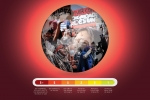By Own Correspondent
THE feud between the Zimbabwe Congress of Trade Unions (ZCTU) and the Reserve Bank of Zimbabwe (RBZ) has once again been resurrected on the back of the latest move by the latter to launch yet another currency.
On April 5, the Reserve Bank of Zimbabwe introduced a new “structured currency” ZiG to tackle the ongoing economic crisis in the country. The new currency is backed by gold, and other precious minerals, and will circulate alongside other foreign currencies.
The ZiG currency is currently trading at a rate of 13:56 against US$1, 00 and is also enjoying a stable exchange rate with less volatility so far.
In a similar reoccurrence of events evoking the memories of the bond notes reintroduction back in 2016, the ZCTU has once again drawn the battle lines with the RBZ.
In 2016, the labour federation denounced the introduction of the bond notes and warned that they were destined to fail. Despite the central bank’s intransigence on the matter, the bond notes collapsed a few years down the line.
This time again, the ZCTU has not remained mum, boldly confronting the authorities for introducing the shoddy currency.
“Confidence in a currency is closely related to inflationary developments and the trust placed in the managing institution. The chronic high inflation experienced in Zimbabwe has eroded the value of the local currency and resulted in a significant loss of confidence among economic agents.
“The ZCTU highlights that the unsustainable growth in the money supply and the consequent depreciation of the local currency have been major contributors to the chronic high inflation,” said Moyo
The trade unions critiqued the readiness of RBZ reserves in supporting the ZiG.
“Reserves play a crucial role in supporting a country’s currency by providing liquidity, stabilizing the exchange rate, and maintaining confidence in the economy. The current reserves held by the RBZ, amounting to US$100 million in cash and 2,522 kilograms of gold (equivalent to US$185 million), might be grossly inadequate to fully back the local currency component of reserve money, which stands at ZW$2.6 trillion, requiring US$90 million in gold and cash reserves.
"The country would ideally need import cover of up to US$4.3 billion to sustain the ZiG, based on the Southern African Development Community (SADC) convergence criterion, which specifies up to six months of imports. Therefore, the ZCTU raises concerns about the adequacy of the current reserves to support the ZiG,” said Moyo.








Leave a comment